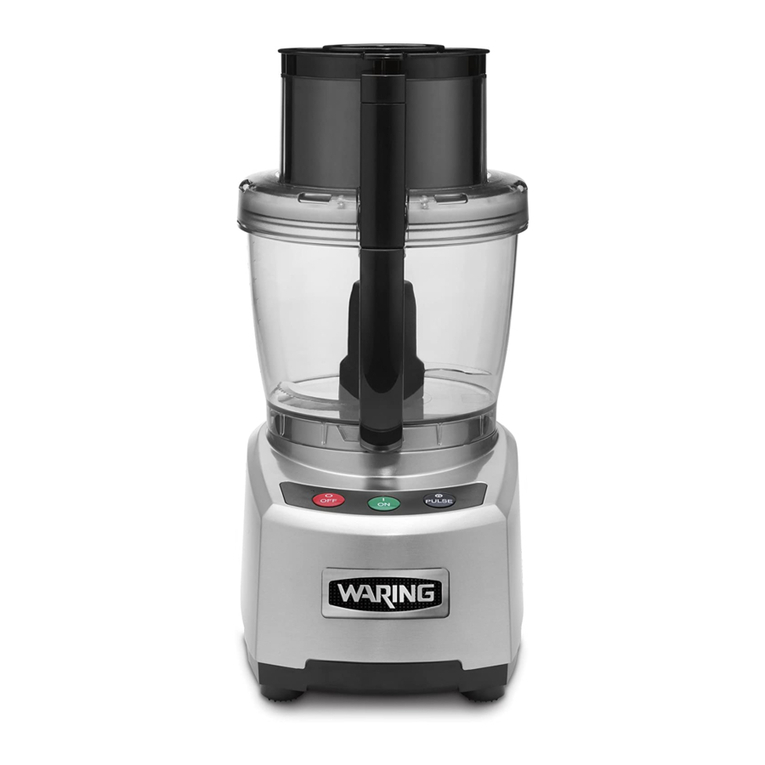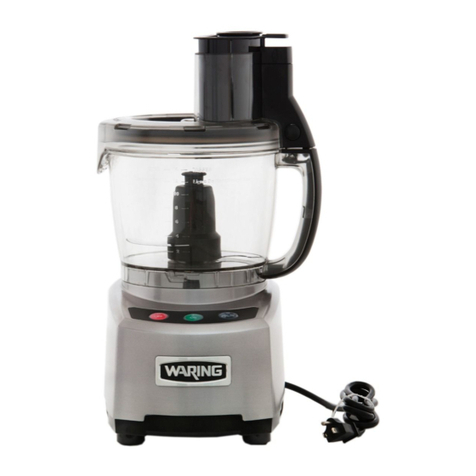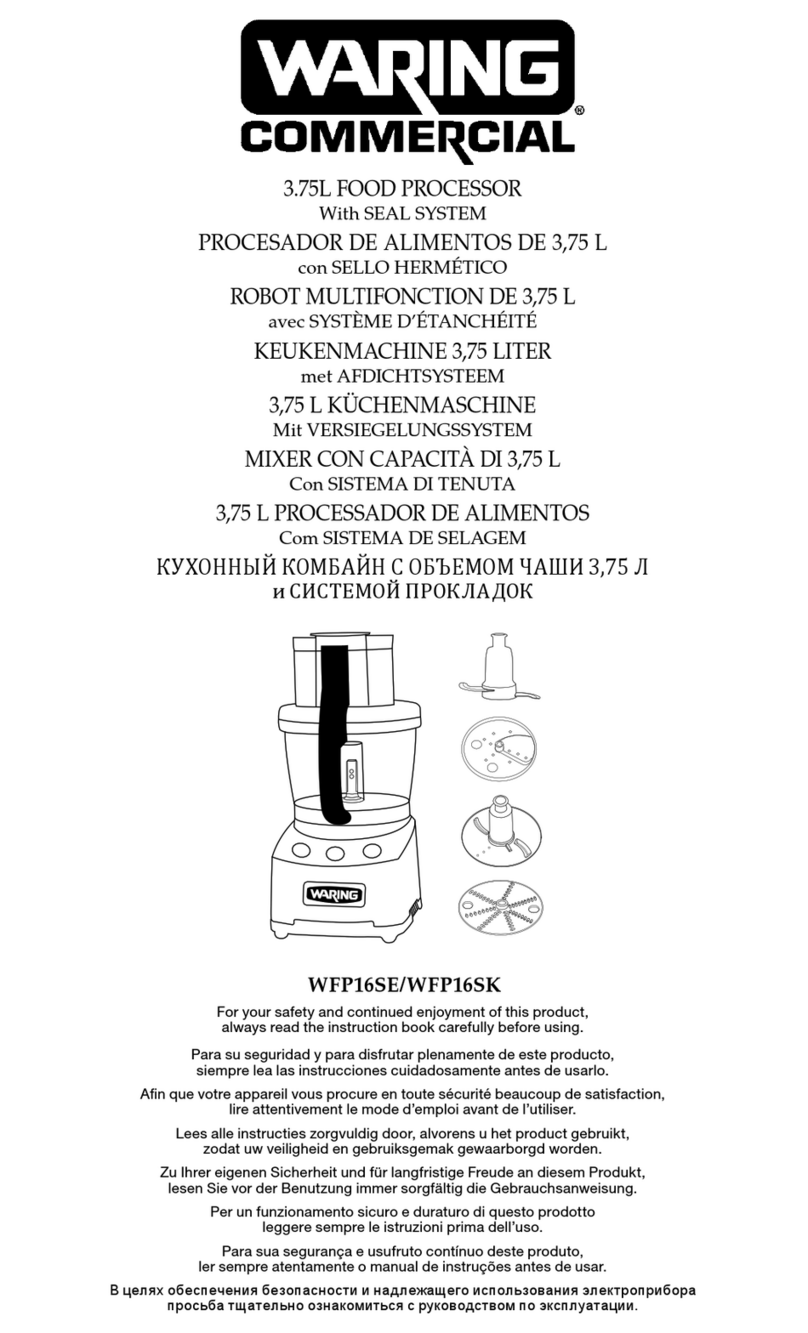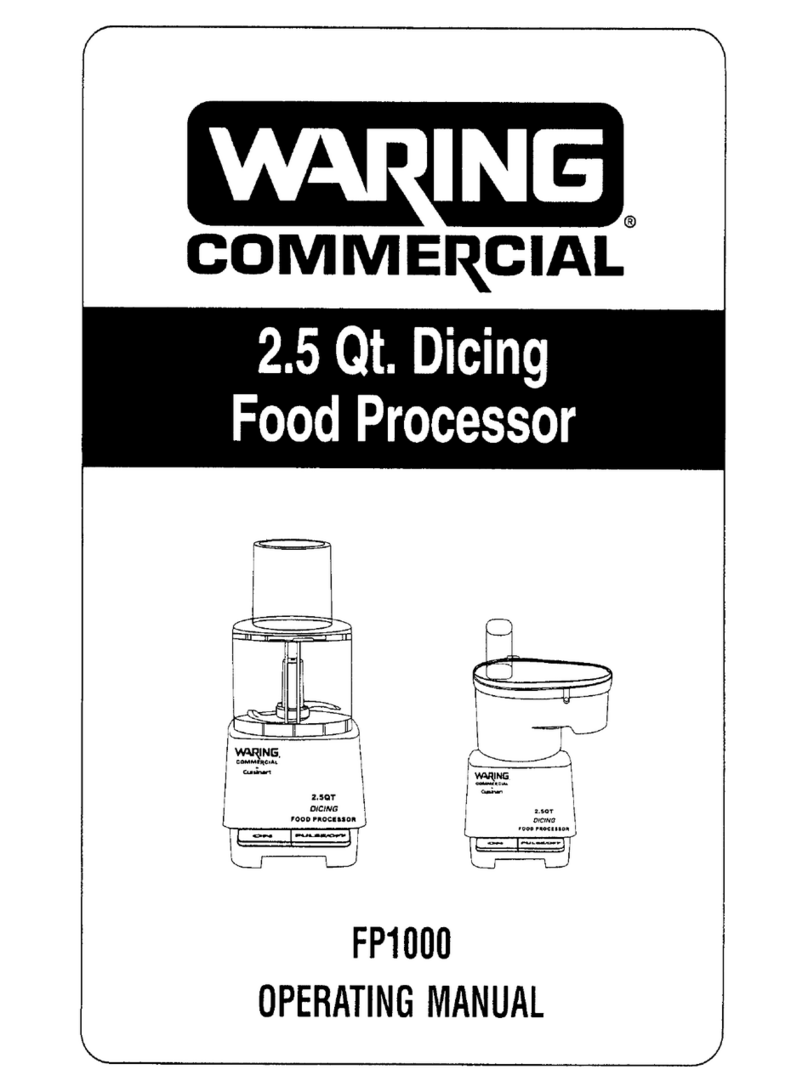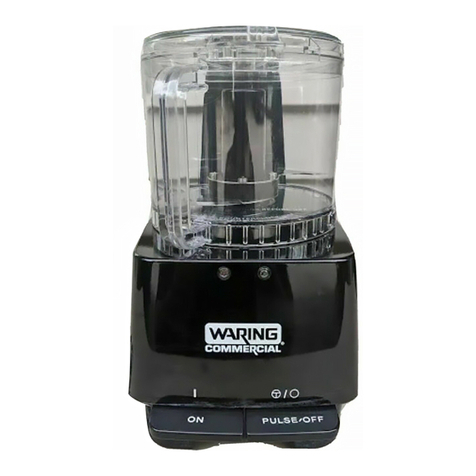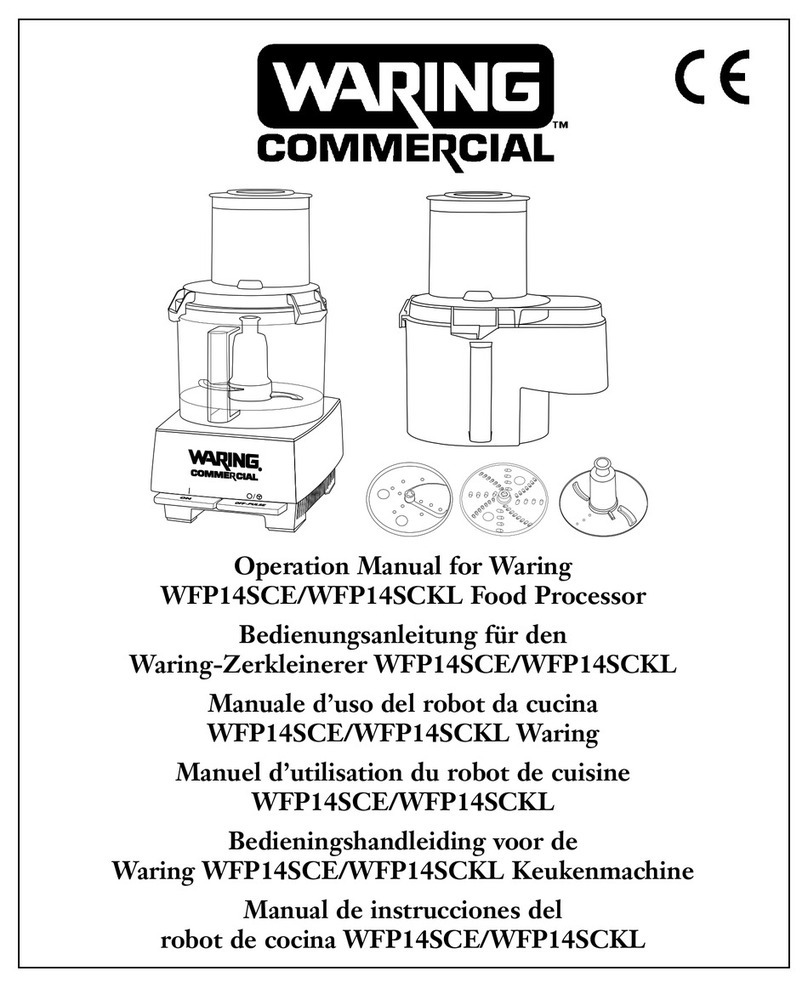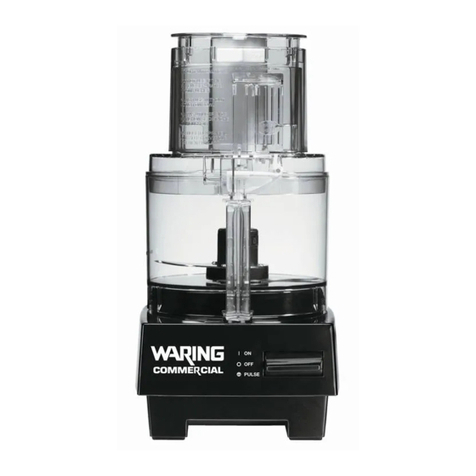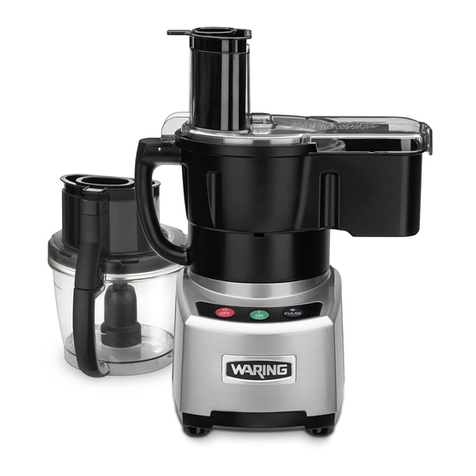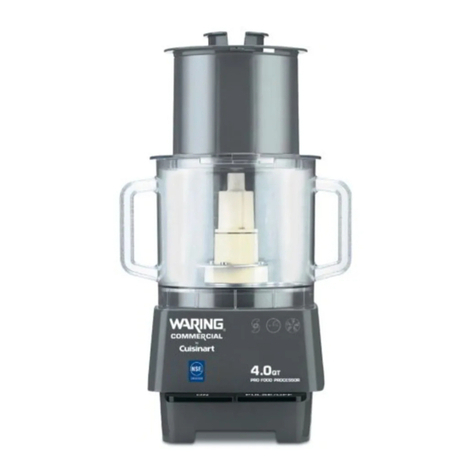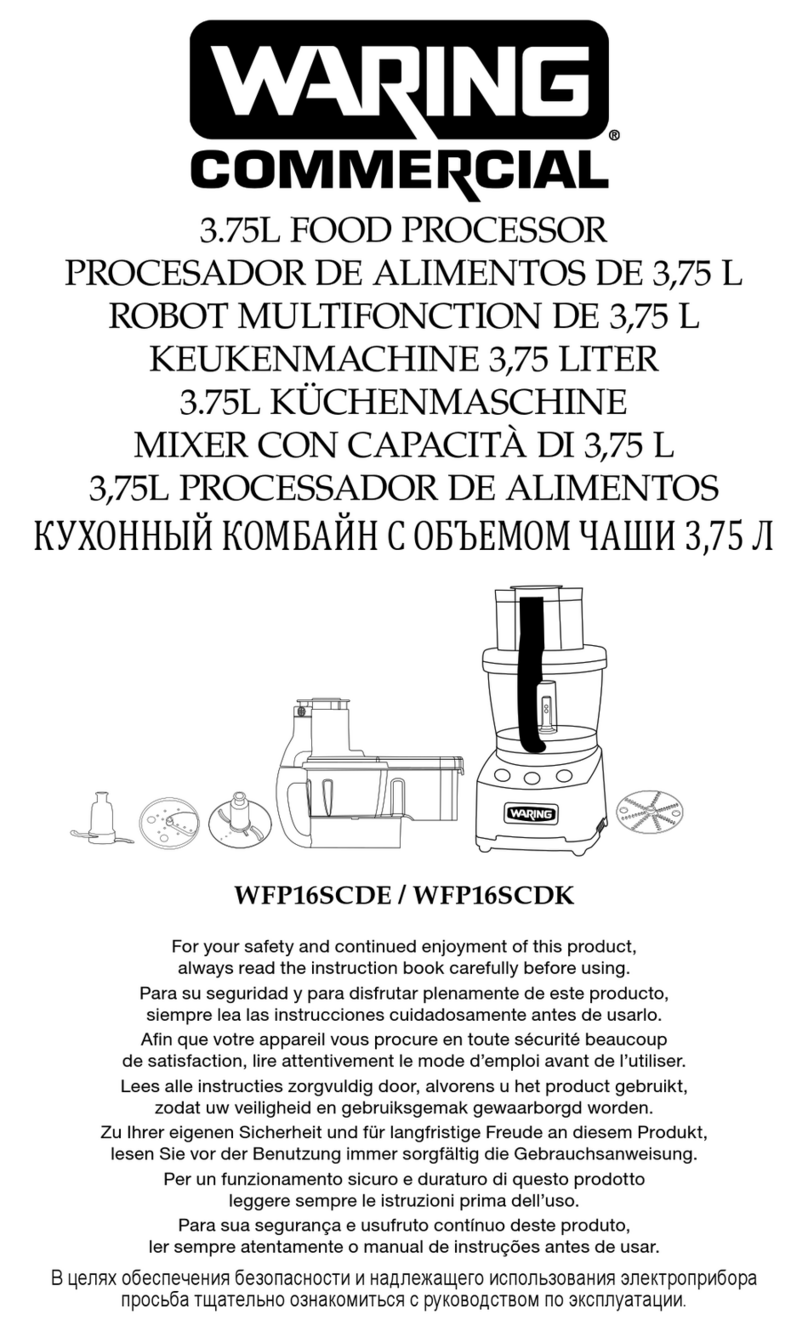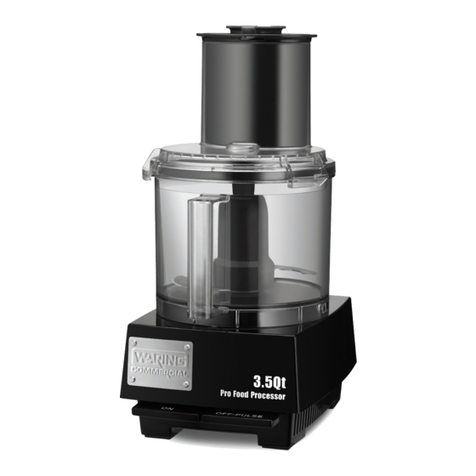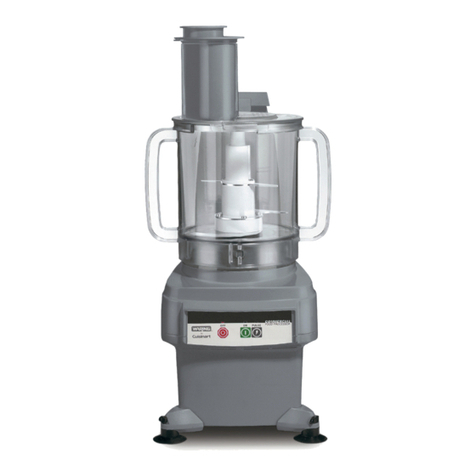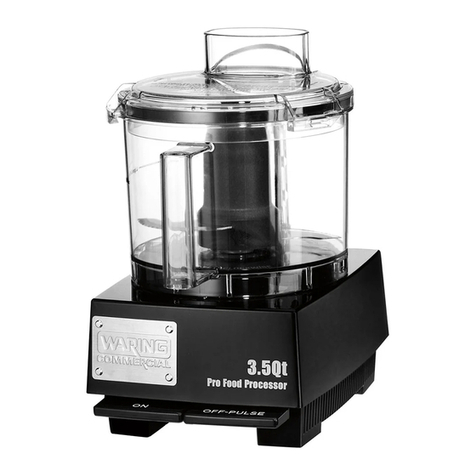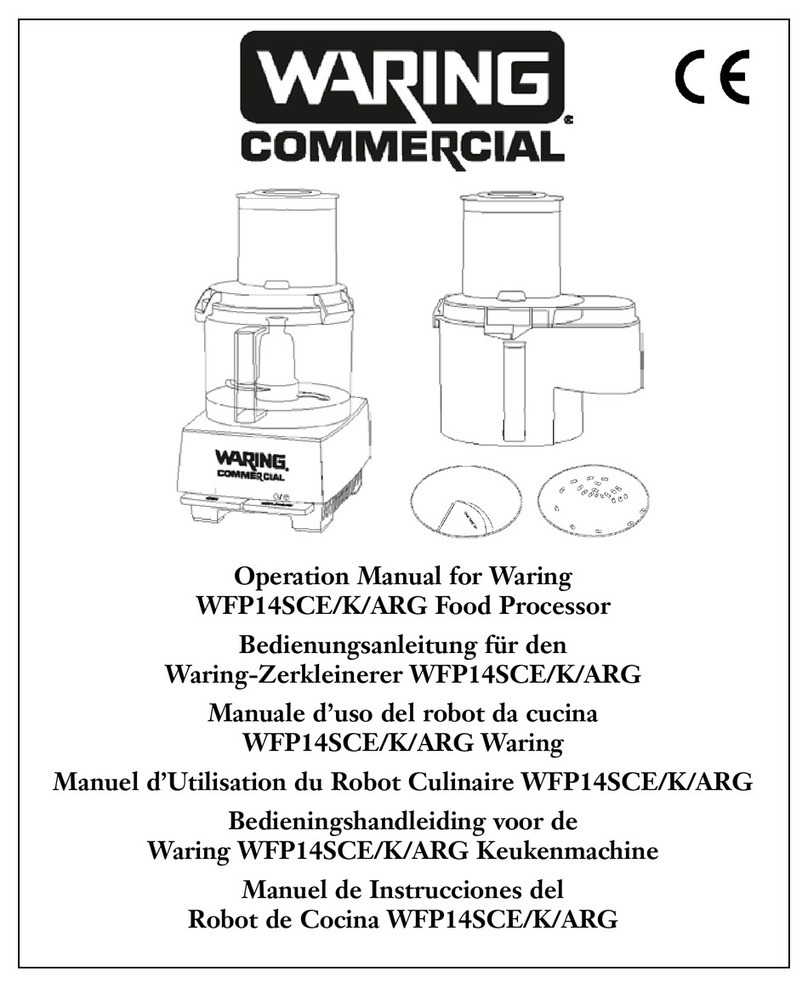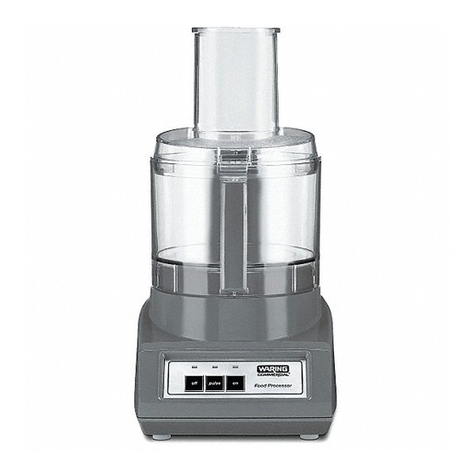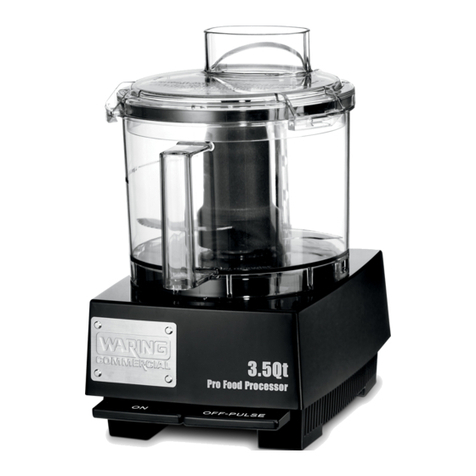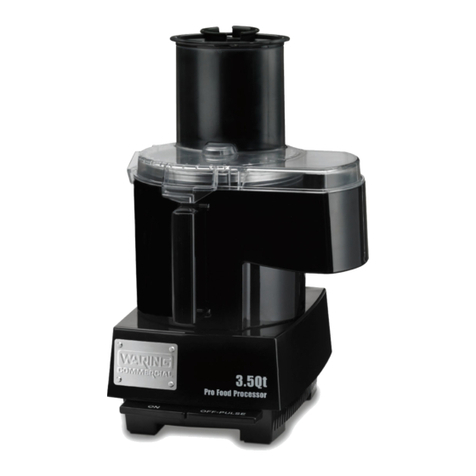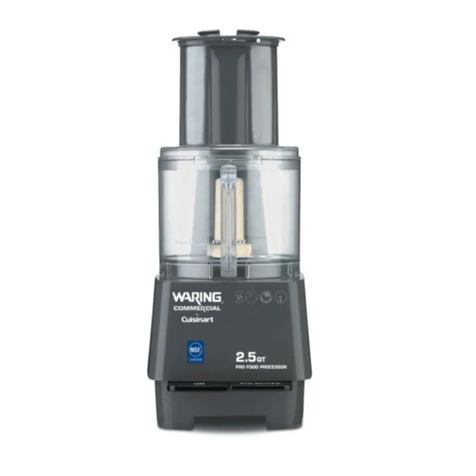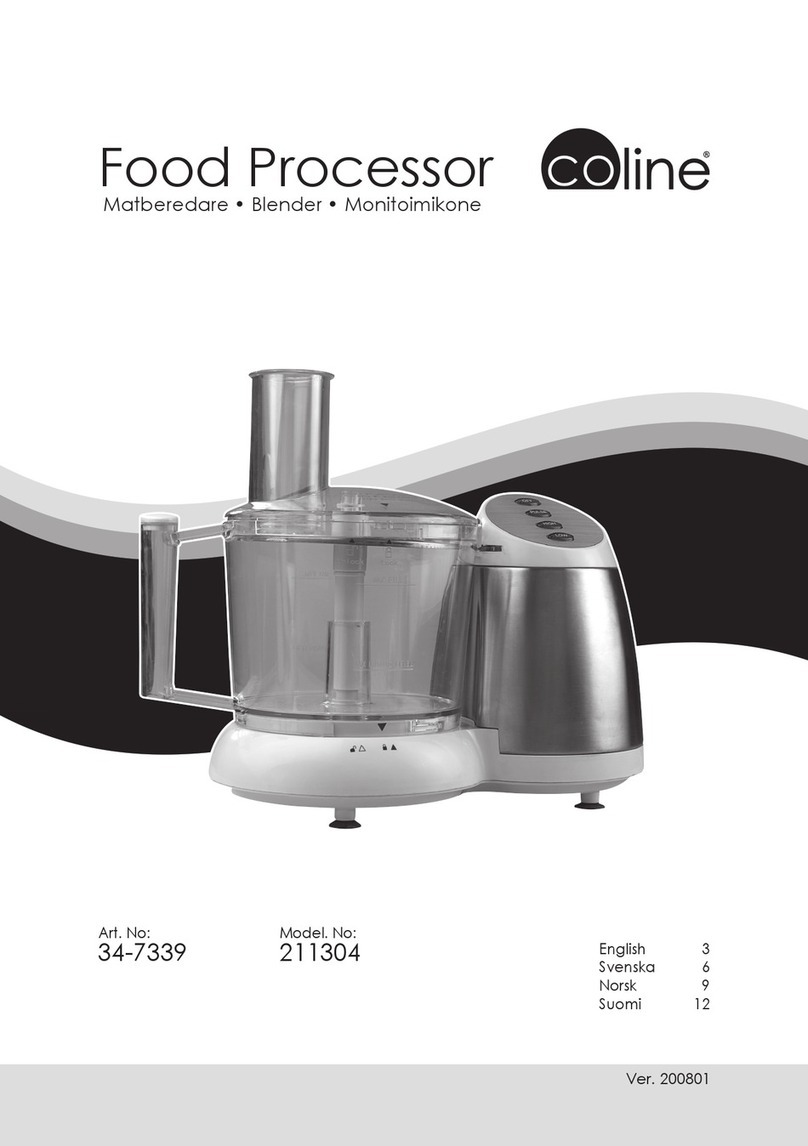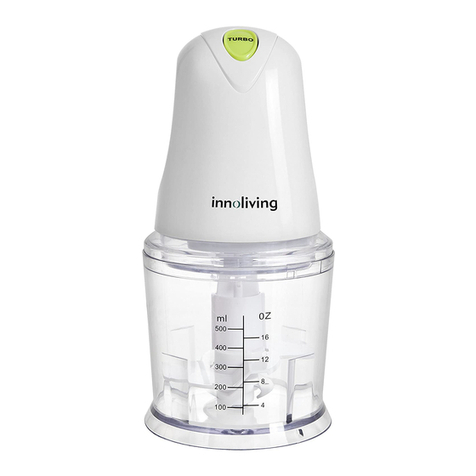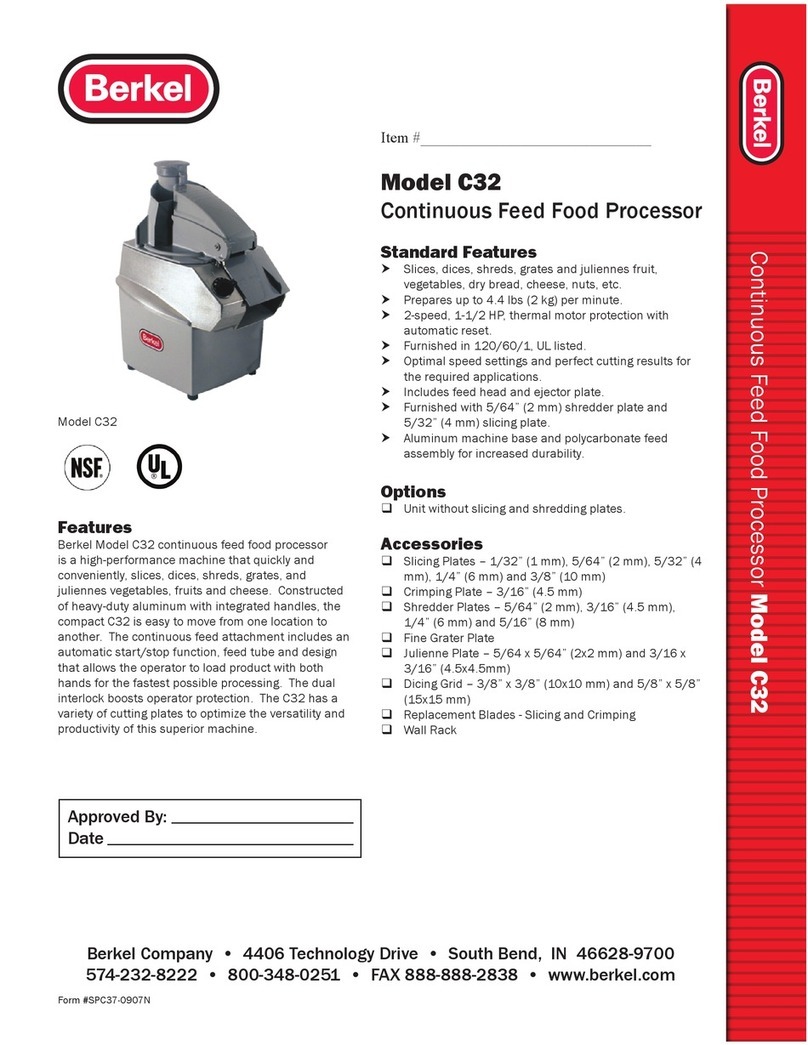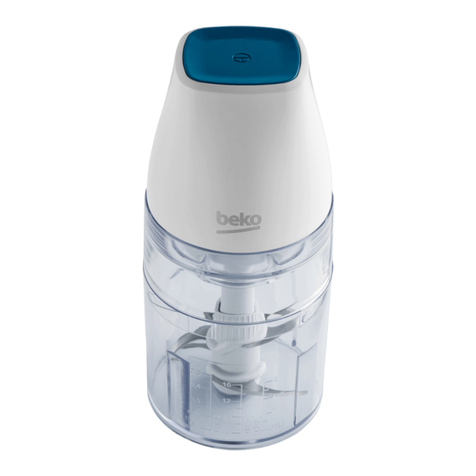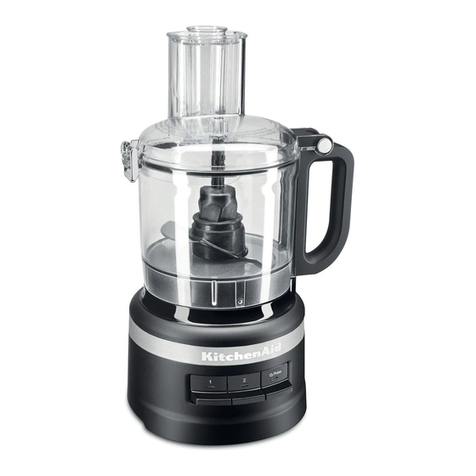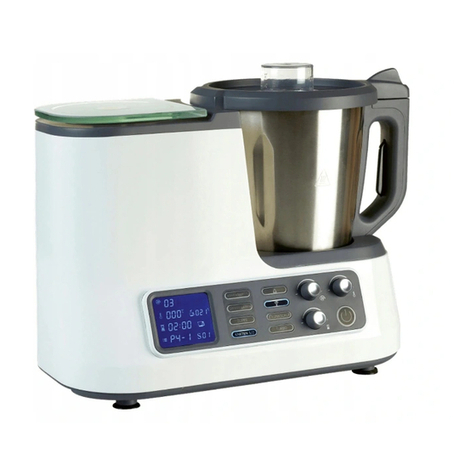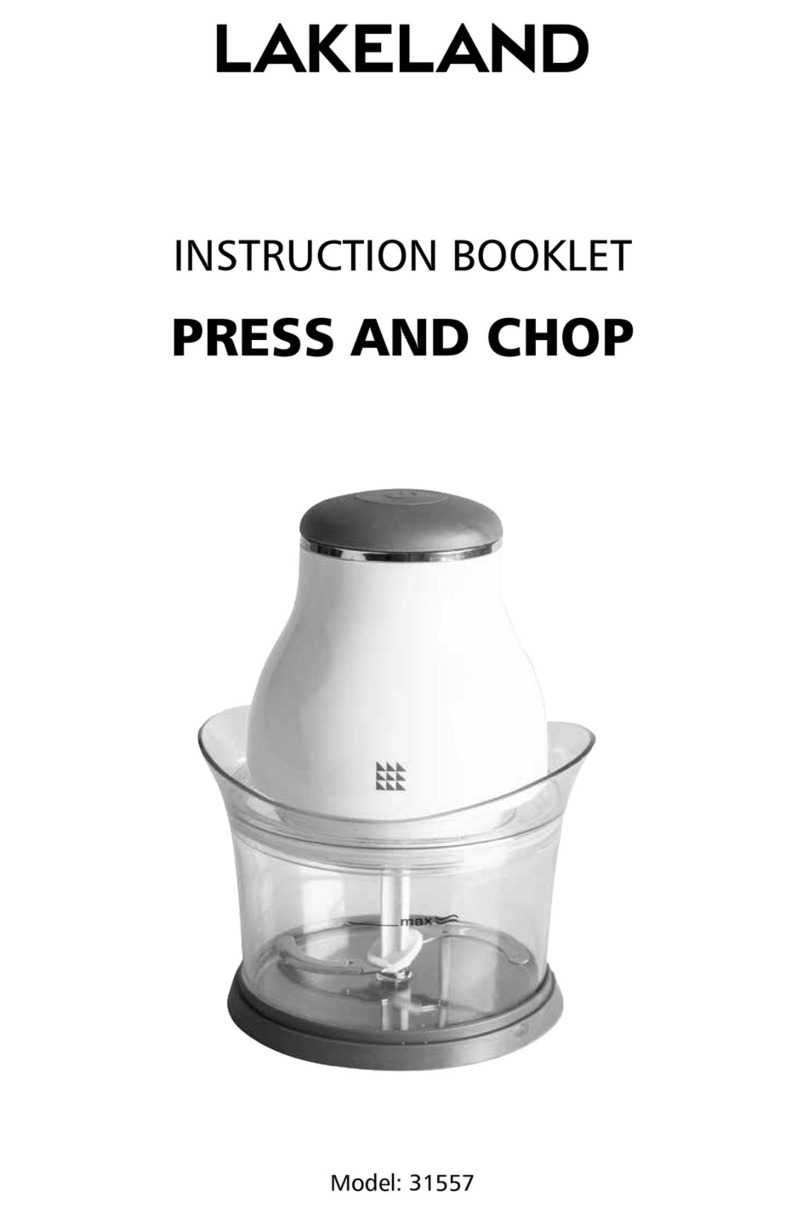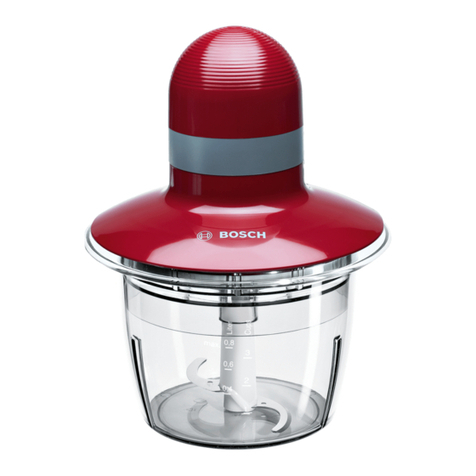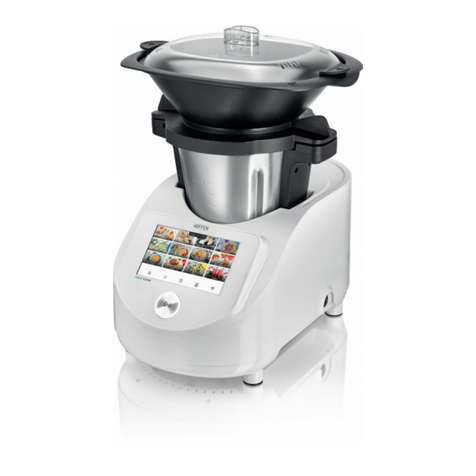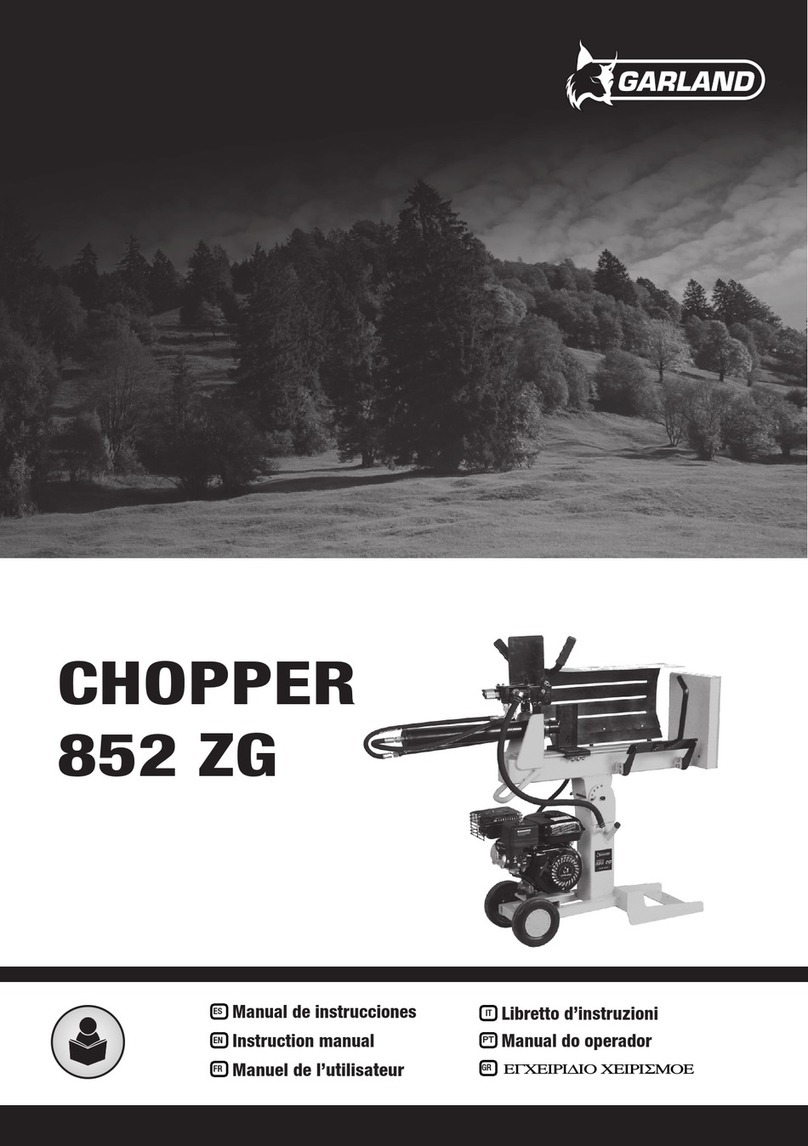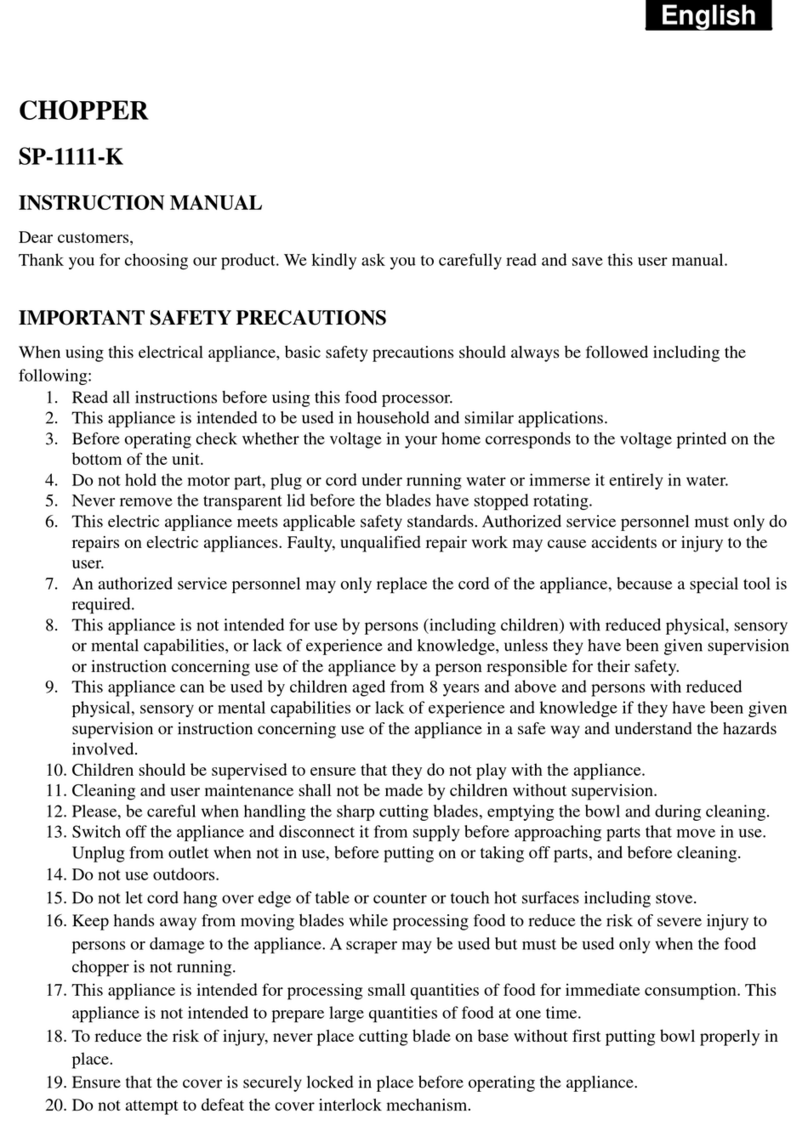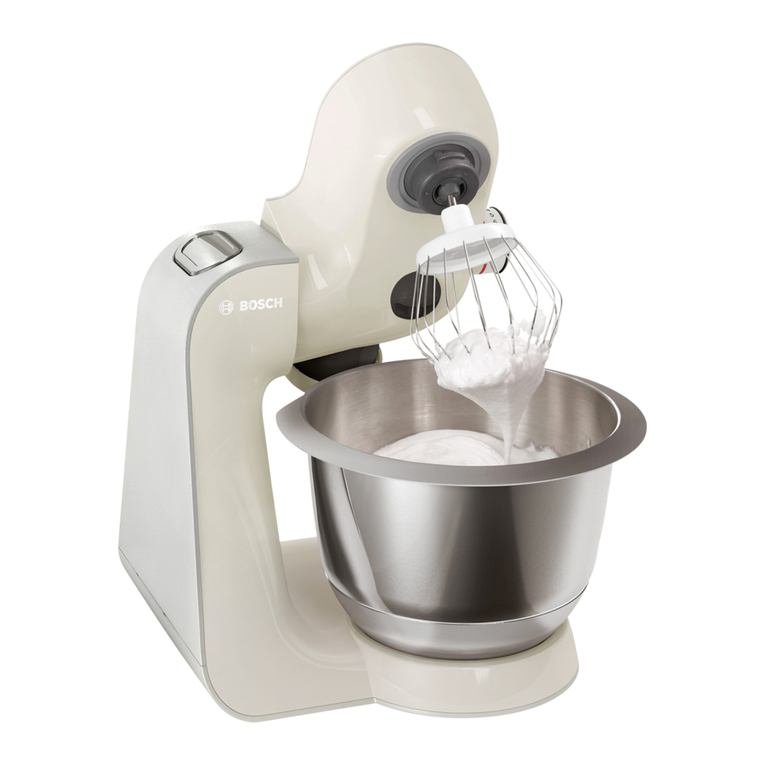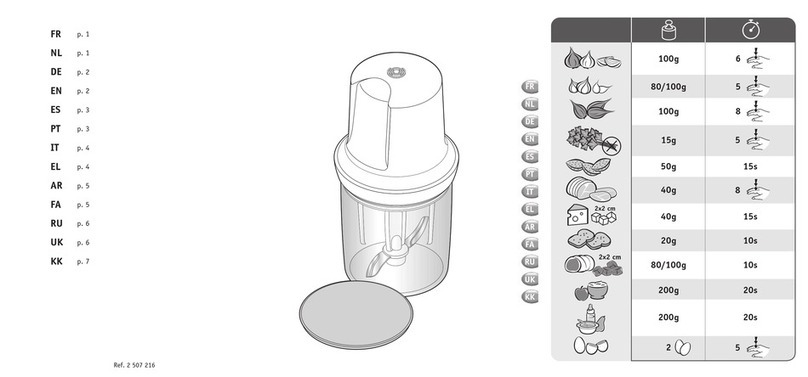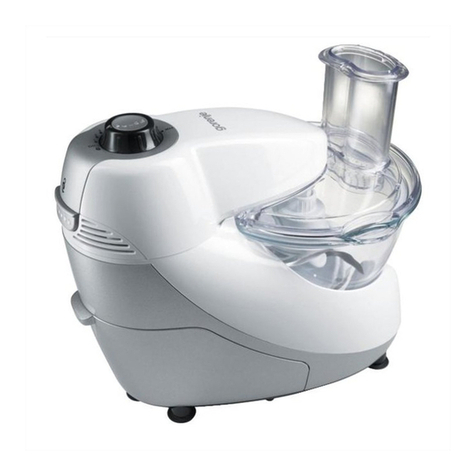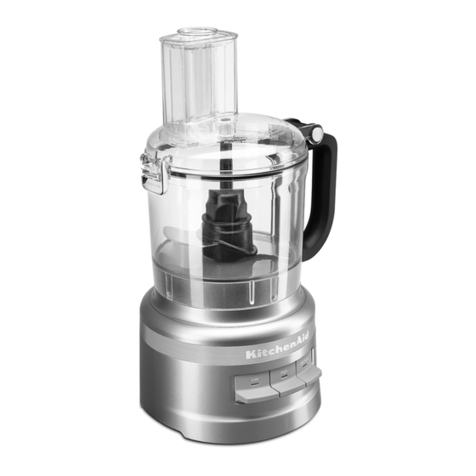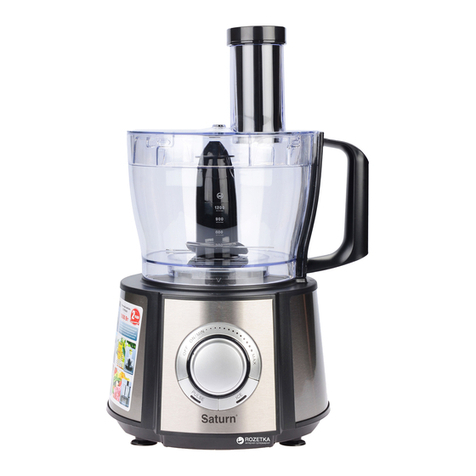
7
ASSEMBLY OF BATCH BOWL PARTS
WFP14E/K
We will use the terms bowl, work bowl and batch bowl interchangeably throughout this instruction
book. They mean the same thing.
• Clean and sanitize the motor base, and wash, rinse, and sanitize the bowl, cover, food pusher, food
pusher insert and processing tools prior to initial use.
• Place the base on a counter or table near an outlet. Position it so you look at the front of the unit
and can see the control levers. Be certain that the cord is unplugged and the OFF ( ) lever has
been pressed. Do not plug in the cord until the processor is completely assembled.
• Pick up the transparent work bowl, holding it in both hands with the handle toward you.
• Place the bowl on the base, fitting its central tube over the motor shaft on the base and placing its
handle slightly to the left of front-center (at about a 7-o’clock position).
• Press the bowl down so the lower rim fits around the circular platform. Turn the bowl counterclock-
wise as far as it will go. It will lock into position with the tabs on the sides of the platform.
Read this if assembling the batch bowl parts to use S-blade (cutter blade).
• Pick up the metal blade, noting the diagram on the top of plastic center. It matches the shape of the
motor shaft.
• Place the S-blade over the tip of the motor shaft, lining up the inside of the hub with the shaft.
Press it down firmly, rotating the center hub until the blade assembly is fully seated. It should
easily drop into place. Be sure it is pushed down as far as it will go. If it is not all the way down, it
may become damaged. Push only on the center section (plastic part); never touch the cutting blade
as it is extremely sharp.
• Check to be sure the blade is all the way down by turning it back and forth while lightly pushing it
down. If properly installed and fully seated, the lower blade will be positioned just above the inside
bottom of the bowl.
• If processing food with the S-blade, now is the time to add the food or liquid to the work bowl.
• Always process dry food first, then add wet food.
Read this if assembling batch bowl parts to use accessory discs in batch bowl.
• Do not put any food in the bowl before placing the accessory disc onto the shaft.
• Select the appropriate accessory disc: grating disc or slicing disc.
• Hold the disc with the cutting side facing your hand. Be careful not to scrape your
hand on sharp edges. Notice the bottom of the disc has a plastic receptacle for the
detachable stem. Holding the stem with your thumb on the release switch, place
the center and right-most two tabs in the two open slots on the bottom of the disc
and rotate clockwise. Refer to diagram.
• Once the stem is installed in the proper disc, carefully guide the center disc hub
over the metal shaft so the double flats on the shaft line up with the disc stem. Put the disc on top of
the shaft and rotate until it drops down and into place. Be sure it is pushed down as far as it will go.
Push on the outside rim only; never touch the cutting blades. It should easily drop into place, but if
not, then gently rock it back and forth until you feel the disc drop into place.
Note: Do not put any food in the bowl before placing the accessory disc onto the shaft.
(batch bowl assembly continues)
L
O
C
K
U
N
L
O
C
K
